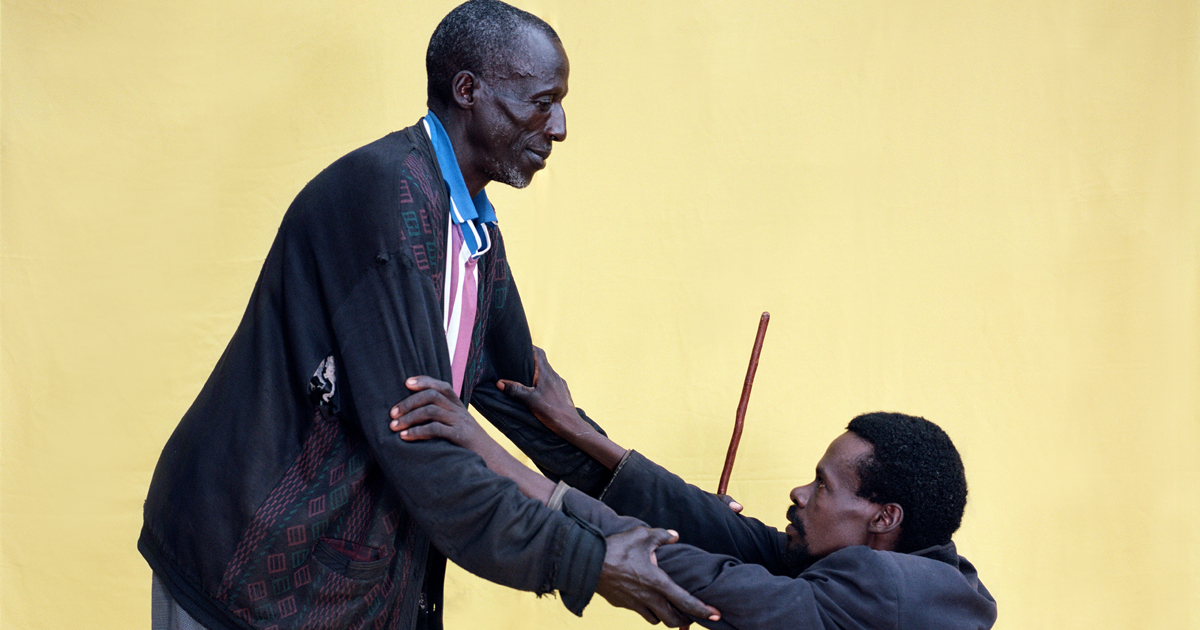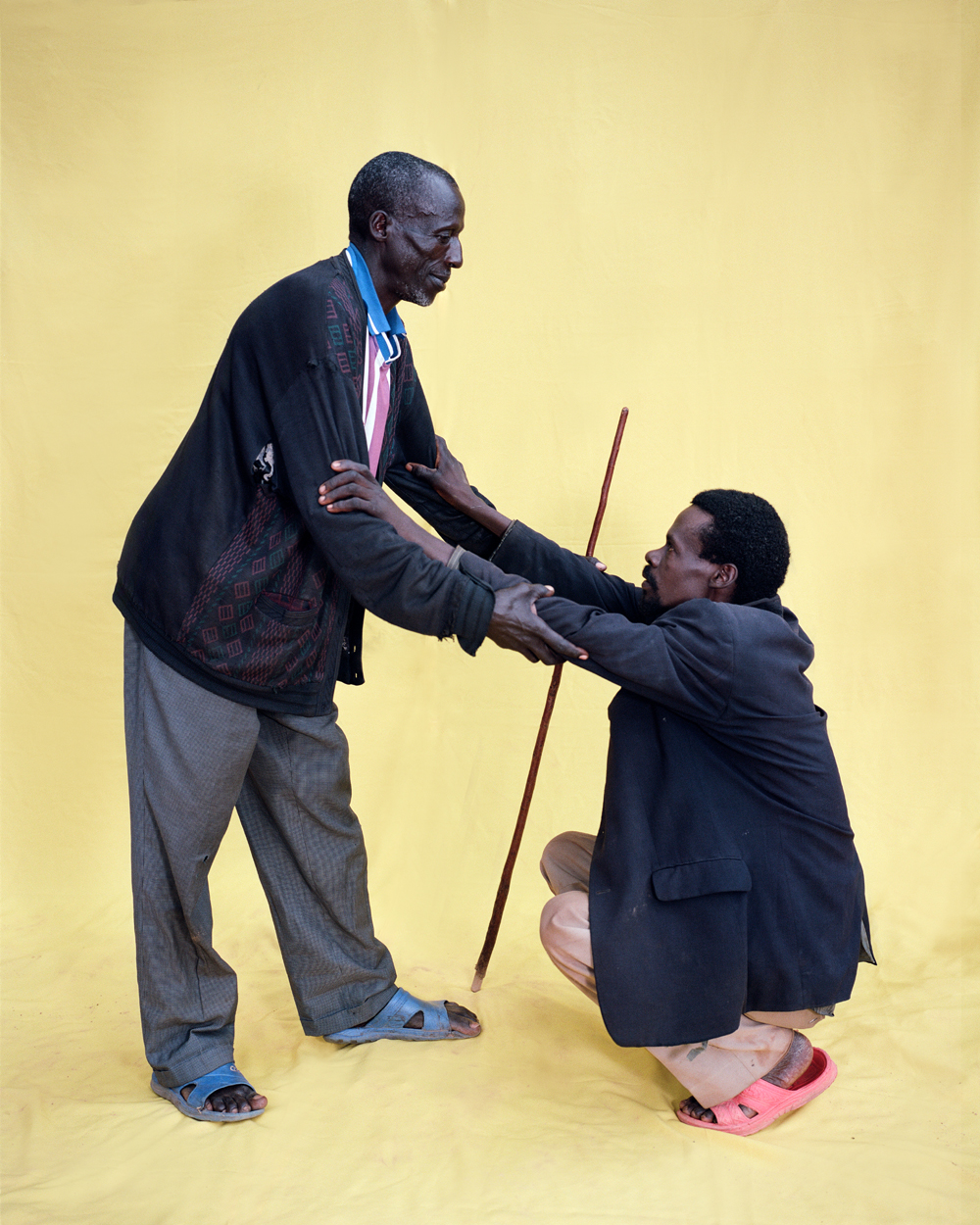Photo of the week: an intimate portrait of reconciliation in post-genocide Rwanda


Our photo of the week from Croatian photographer Lana Mesić is a meditation on the human capacity for forgiveness, in this case in the aftermath of the 1994 genocide in Rwanda.
The portrait features two figures, the survivor and the génocidaire who participated in the killing of his family.
Taken in 2014, the photo comes from a larger body of work entitled Anatomy of Forgiveness, each portrait representing a moment of reconciliation between a victim and perpetrator. In making the series, Mesić was forced to confront the ethics of photographing the aftermath of the genocide, and the people who lived through it.
“I didn’t want to impose my views, how as a white woman I saw them, but wanted to give them their voice. This is easier said than done. Instead I simply asked them the question: how did the moment of forgiveness look like? I didn’t give them any further instructions on how they should stand or look. It was up to them. In this way I wanted to give them the power of representation,” Mesić explains.
Mesić‘s work is as much about the difficulty of expressing forgiveness as the act of forgiving. The gesture captured in this particular portrait, with both of the men reaching out to one another, encapsulates how reconciliation requires both parties to meet halfway.
“The man on the right has asked for forgiveness by kneeling and apologising for what he has done. The family consisted of around 30 people. However it was my conscious choice not to elaborate on particular stories of each couple. This shifts the focus to the gruesome nature of genocide. My interest lies in the reconciliation. So as not to let the past overshadow the forgiveness, I made the choice not to disclose the interviews,” Mesić says.
To find participants for the project Mesić sought the help of a reconciliation program. In the process, she came to discover that many of the couples she photographed were neighbours, who will have lived with each other in the years following the genocide.
“We are used to the Hollywood image of forgiveness decorated with Pan Am smiles and happy endings. In Rwanda foregiveness is a necessity that allows people to move on with their lives. It is exactly their lack of smiles that teaches us the many faces of forgiveness,” she writes in the introduction to the series.